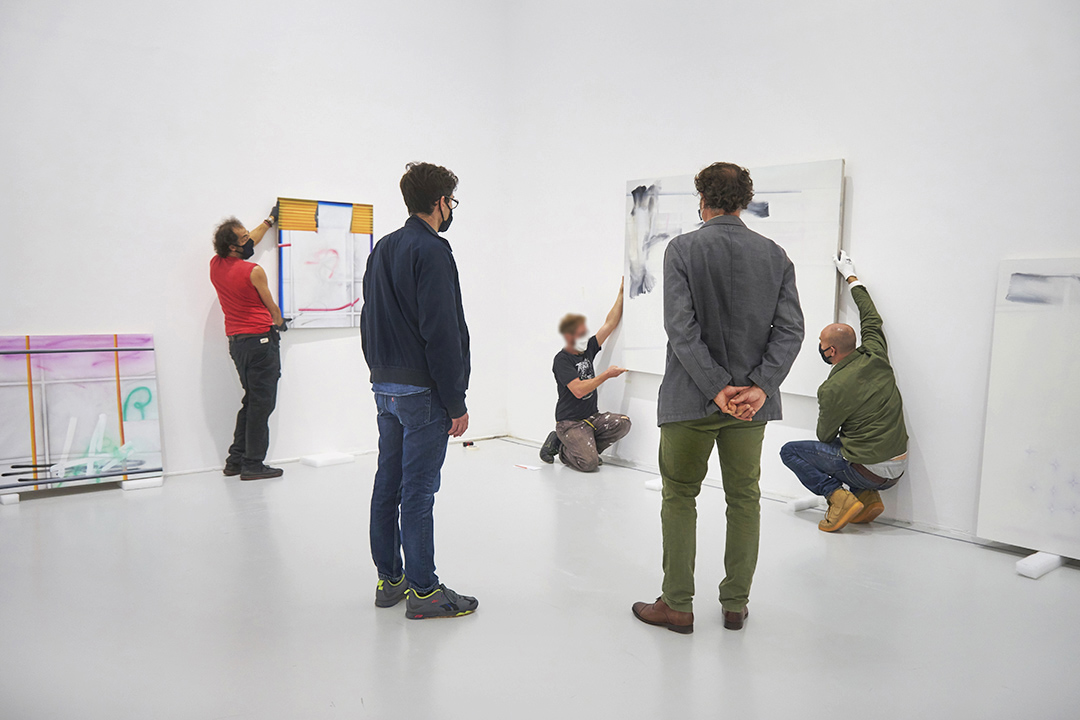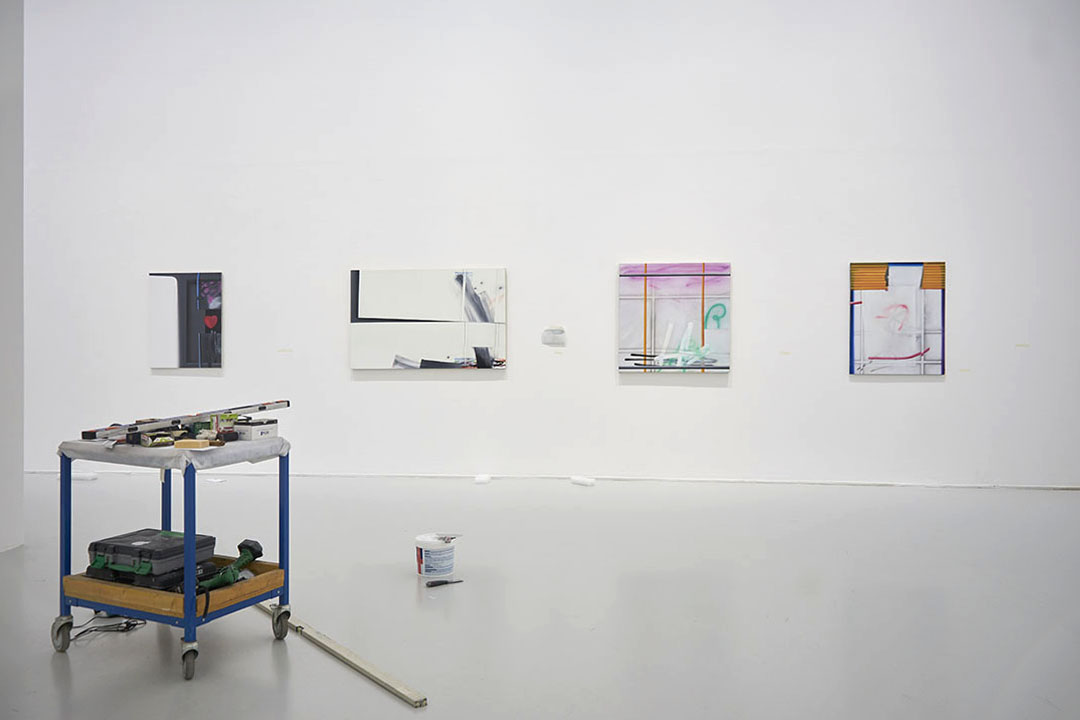 © Robin Curtil
© Robin Curtil
Robin Curtil is interested in the process of
painting as a sensitive language and the canvas as a space for poetic
experimentation. Through the act of painting itself Curtil finds the
driving force of his practice.
The process of layering, repeating, and erasing culminates
to reach the moment when the painting finally appears.
Curtil’s material interests
border on the alchemical, manipulating paint and combining it with non-traditional
materials with a sense of experimental wonder.
The properties of oil
paint allow him to play with impasto, transparency, overlay, and
the representation of volume or surface inducing perspective and figuration. His paintings hold
layers of transparent pigment that constantly push elusive forms in and out of
focus, nestling his work between abstraction and representation.
Gathering, sorting, collating, and associating
imagery permeates throughout his practice.
He uses color taken from his immediate surroundings. Greens peel back to
reveal rich oxides read like layers of subway paint. Created
across multiple series, Curtil’s work
captures the immediacy and ephemerality of his time. Each
piece evokes the aesthetics of both individual and collective memory through a
deep investigation into the act of painting.
 © Robin Curtil
© Robin Curtil
Robin Curtil’s abstract paintings first seem to be remarkably
efficient, in a nearly purely graphic register of efficacy, with stark
contrasts between bright colors and white backgrounds. But things become
markedly more complex if you take a second look.
Gestural shapes and drawn with meticulousness, what seemed to be a tow-dimensional plane reveals unexpected depths, juxtapositions sometimes appear as strata, and in some other instances, as planes. Stains, strokes, colors partly wiped out, graffiti : those paintings run the whole gamut of the different types of traces. But a trace, as is commonly known, evokes a specific memory. It preserves parts of the presence of a thing but is distinct from the quotations used by previous generations of artists, which referred to a specific point of origin. The visual immediacy of these paintings is thus paradoxically combined with a sense of duration, of the slow passing of time, also hinted at by the superimposed layers through which shapes start to emerge. This sense of a memory inherent to the patting is also echoed by the more or less explicit presence of a painting within the painting.The diversity of the motives and the heterogeneity of elements seem to spring forth from these different strata. The painting thus offers a punctual snapshot of a transitory state where shapes, between appearance and disappearance, coexist without ever freezing up, caught in a persisting ambiguity.
Unlike historic abstraction, but also significantly diverging from its later quotational deconstruction, Robin Curtil’s paintings derives from an impulse toward survival, caught in a state of uncertainty, but also corresponding to true, exhilarating freedom.
Romain Mathieu, 2020
©robin curtil, 2024 © adagp, 2024
